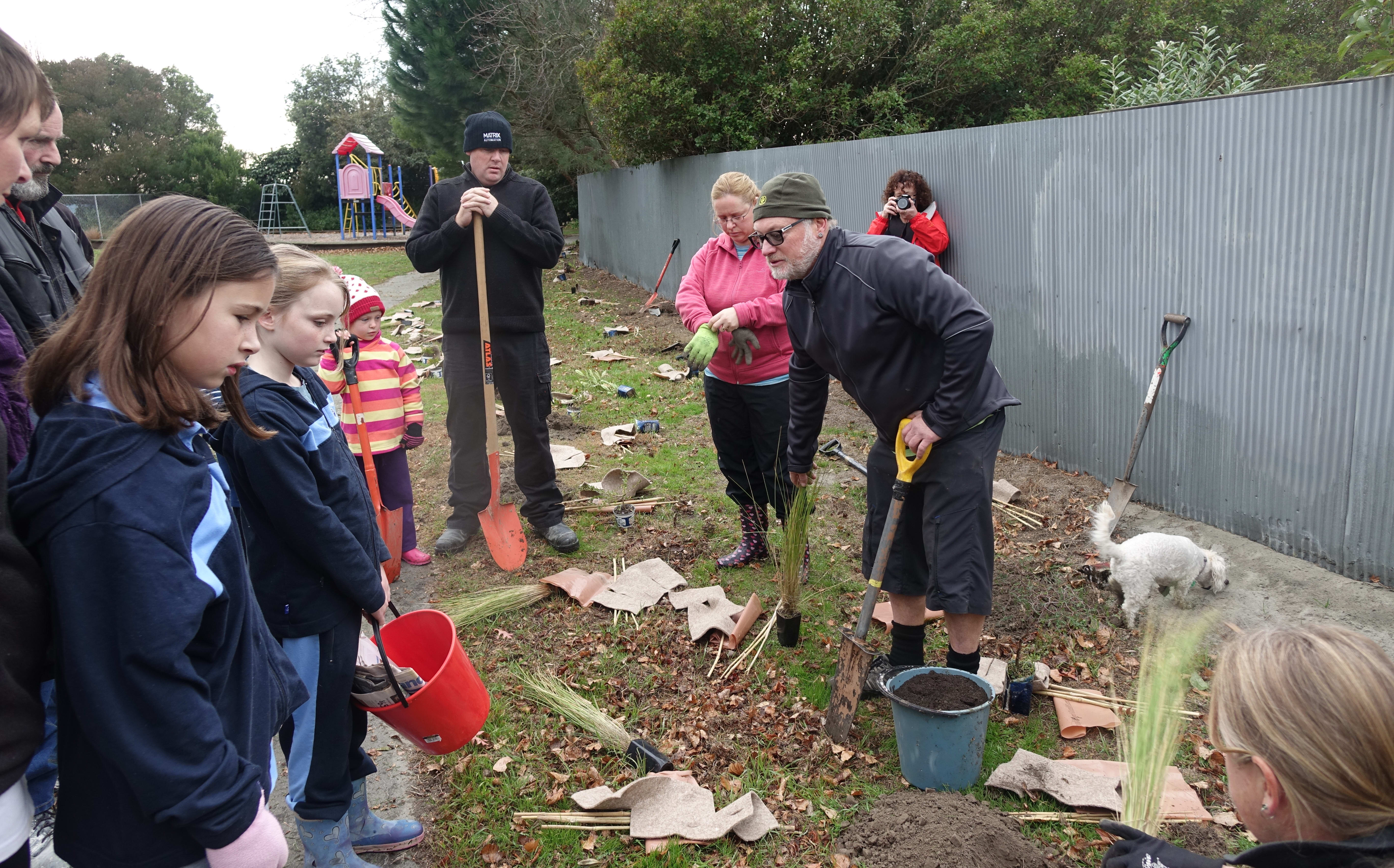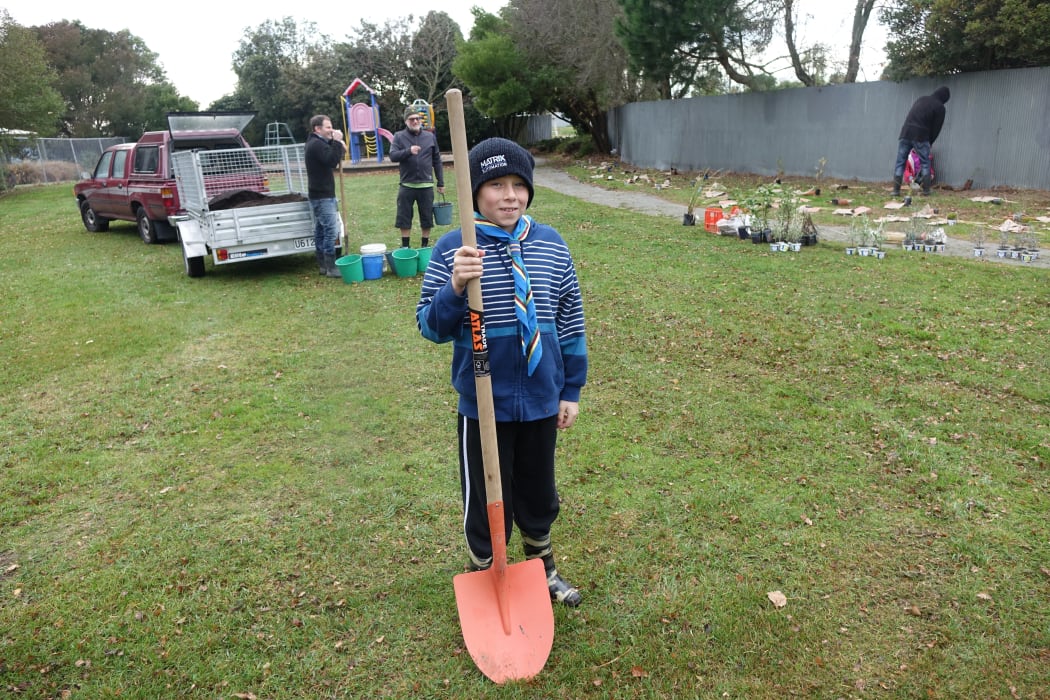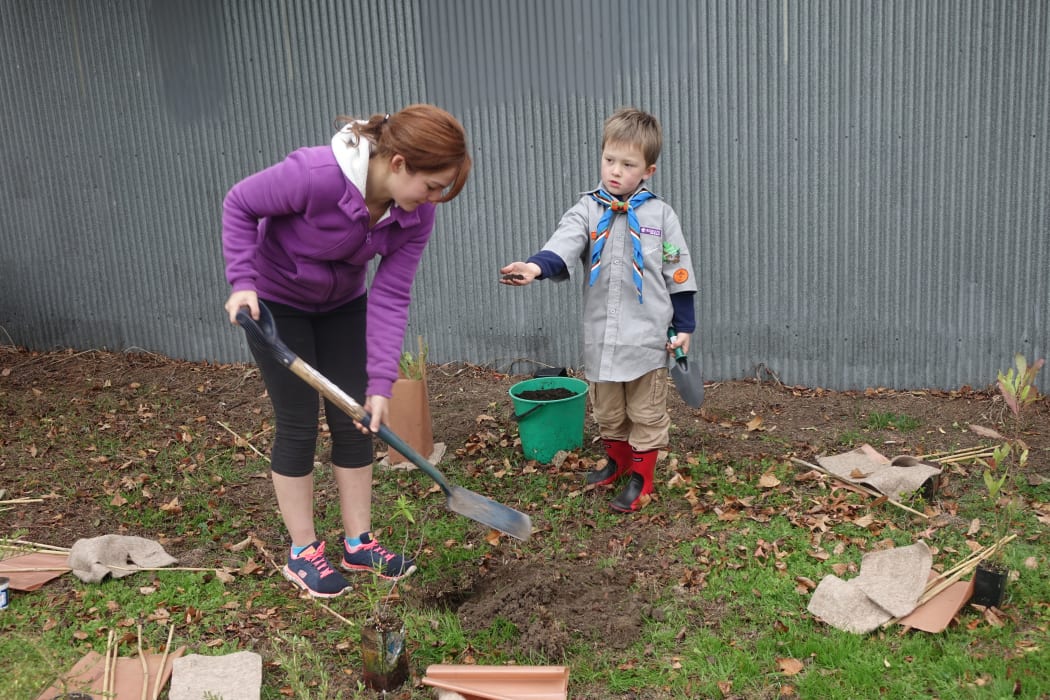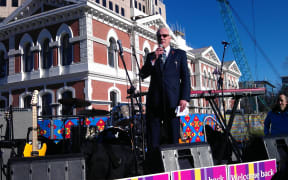Cantabrians are still waiting to hear what the Government plans to do with earthquake-damaged red zone land, but members of one community group are getting on with making their idea a reality.

The volunteers gathered for some tips on planting before they get started. Photo: RNZ / Rachel Graham
The group, Greening the Redzone, wants all the land turned into native forest.
Rather than wait for the Government to finally make its decision, the group has approached Christchurch City Council and gained permission to start planting on park land within the red zone.
On a cold winter morning, a group of about two dozen adults and children gathered in what was formerly known as Halberg Reserve, in the suburb of Dallington, which has now been red zoned due to earthquake damage to the land.
The council has granted the Greening the Redzone group permission to plant native plants in the reserve and the group now holds regular working bees.
The group also has permission from the Canterbury Earthquake Recovery Authority to do weeding work in some areas of its red zone land.
At Halberg Reserve they are planting a mix of akeake, kowhai, cabbage trees, coprosma and five kahikatea.
Volunteer Denise Ford said Christchurch had a once-in-a-lifetime chance to create something special for the city, out of the devastation of the earthquakes.
She said that if their dream came true, and the red zone becomes a forest and wetland, in years to come people would think of the area as they did of Hagley Park.
"They'll say what a wonderful thing our ancestors did to do that. It will be as good or better than Hagley Park, because most of it will be our own indigenous species."
The area being planted is next to a scout den, and the scouts have came along to help out.
Scout leader Susan Macann said because they were also red zoned, they would likely have to leave the area, but until then the scouts want to do their bit to tidy up and beautify the park.

Scout Alex Neil, 10, was one of the volunteers who helped at the Greening the Redzone's planting day. Photo: RNZ / Rachel Graham
"We're starting to take ownership, starting to grow, starting to recover, and make this place look like we want it to look.
"(The scouts) will probably end up moving away because this is red zone, but they will always be able to come back and say, 'I made a positive difference to my world'. I think that's great."
One of the scouts helping out was ten-year-old Alex Neil.
He said he wanted to help because the scouts have pretty much taken over the park.
He was in charge of handing out scoops of soil, along with his little sister, and said he was finding the work pretty easy despite not knowing much about gardening.
Another volunteer, Lizanne Docherty, used to live in the area as a child and was keen to help make the red zone look a little less unloved.
"My grandfather's ashes are actually scattered around here, so this is a place we do come and visit," said Ms Docherty. "It'd be nice to see something happen (with the red zone), because it does seem to be lagging."
Greening the Redzone chair Ashley Campbell said they were aware that the Government might decide to do something different with red zoned land, but she hoped the work they had been doing would show the merits of their plan.
She said planting the area in natives would be one of the cheaper options.
"It won't involve massive engineering. It won't involve massive hardworks. It won't involve closing the red zone off and putting bits of it behind a fence and making people pay to go into it.
"It will be wide open. Everybody will be able to enjoy all of it. They will be able to cycle and kayak and walk and jog and run, and in 50 years time they might be able to do treetop walks and treetop adrenaline rides."
The Canterbury Earthquake Recovery Authority has carried out public consultation on what should happen with the Waimakariri red zone, and that work was to be followed by consultation on what should happen in the Christchurch red zone.
That process has however been put on hold until the Canterbury Earthquake Recovery Authority resolves the issues around the buyout offer to people who have turned down the red zone offers.

Ashley Costello and her son Archie were helping to plant natives at the redzoned Halberg Reserve, in Dallington. Photo: RNZ / Rachel Graham


